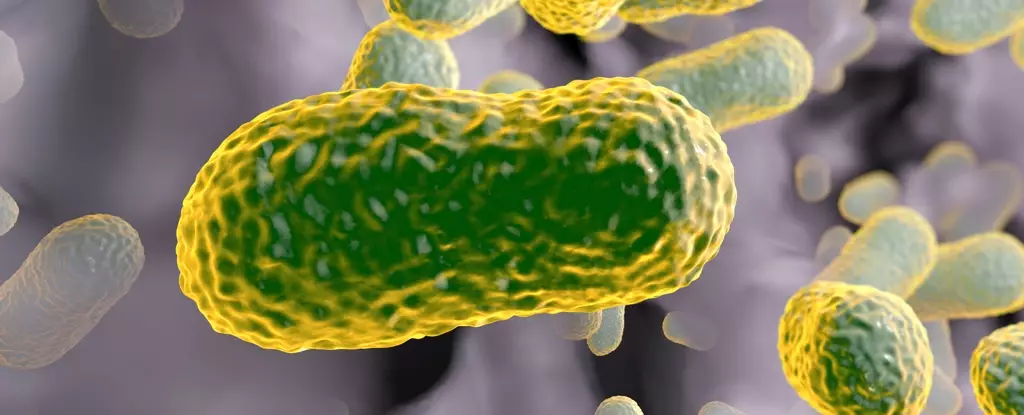The relentless rise of drug-resistant bacteria, often termed ‘superbugs’, poses a significant threat to global health. As traditional antibiotics lose their effectiveness, the search for alternative solutions becomes increasingly urgent. In a fascinating twist, an antibiotic once discarded and obscured by time—the streptothricin class—has emerged from obscurity as a potential weapon against these formidable pathogens. This article delves into the historical context of streptothricin, its newfound relevance, and the scientific journey toward therapeutic revival.
Antibiotics have revolutionized medicine since their discovery, particularly during the mid-20th century—the so-called ‘golden age of antibiotics’. Many contemporary antibiotics are merely iterations of early compounds, reflecting the substantial legacy that these pioneering substances left behind. However, the rise of multi-drug resistant bacteria, particularly gram-negative strains, has posed significant complications. Unlike gram-positive bacteria, gram-negative pathogens are safeguarded by an outer membrane that complicates antibiotic efficacy. Thus, the hunt for effective antibacterial agents specifically targeting these resilient organisms has become critical.
One antibiotic from the past, streptothricin, originally isolated in the 1940s, showcased promise against gram-negative bacteria. Yet, despite its potential, early studies highlighted its toxicity, especially concerning human kidney cells. Consequently, this compound was set aside, overshadowed by newer, less hazardous medications. The historical dismissal of streptothricin exemplifies a larger issue in pharmaceutical development—the potential of older drugs often remains unexplored due to initial safety concerns.
Recent research led by pathologist James Kirby at Harvard University offers a fresh perspective on streptothricin, now rebranded as nourseothricin. The rejuvenation of interest in this antibiotic underscores the need to reevaluate the properties of previously overlooked compounds. The backdrop of escalating drug resistance serves as a clarion call for scientists to rediscover and transport these botanical agents back into modern medical discussions.
What sets nourseothricin apart is its derivation from gram-positive soil bacteria, signifying a deep-rooted evolutionary response to the unrelenting battle against infections. Kirby emphasized that with current antibiotics struggling against multi-drug resistant pathogens, the time is ripe for rigorous reexamination of long-abandoned drugs. Through meticulous investigation, researchers have determined that the individual components of nourseothricin, particularly streptothricin F (S-F), retain remarkable antibacterial efficacy without the previously observed toxicity.
Although the fundamental mechanisms of streptothricin’s operation remain somewhat opaque, early findings suggest it operates distinctly from other antibiotics. Preliminary research indicates that S-F disrupts the protein synthesis machinery of gram-negative bacteria in a unique manner—unraveling pathways that other medications have failed to breach. This offers new hope for establishing an entirely new class of therapeutic agents designed to tackle these resilient pathogens.
Interestingly, lab tests on mice have demonstrated the potential effectiveness of S-F against bacteria that have developed resistance to multiple antibiotic treatments. The implications are staggering: providing a low-toxicity option that can effectively navigate the formidable defenses of gram-negative bacteria could greatly enhance our arsenal against superbugs.
The rediscovery of streptothricin is merely the beginning. Researchers are now posed with the challenge of enhancing the efficacy of compounds like S-F to maximize their potential as superbug combatants. This pathway of exploration could lead to optimized formulations capable of broader application, moving beyond a singular focus on resistant strains.
As science presses on, the story of nourseothricin reminds us of the cyclical nature of discovery within the realm of pharmaceuticals. The antibiotic landscape is fraught with hurdles; however, rekindling interest in forgotten compounds could very well be the key to overcoming one of modern medicine’s most pressing crises.
The resurgence of nourseothricin and its constituents in the struggle against drug-resistant bacteria reflects a vital transformation in medical research philosophy. As the scientific community pushes forth with renewed vigor to empower historical compounds in contemporary disease management, the potential healing properties of the natural world remain a prominent beacon of hope against superbugs lurking in hospital corridors and community settings alike. As this research continues to evolve, the resurrection of a once-forgotten antibiotic stands as a testament to innovation driven by necessity and the cyclical nature of scientific discovery.

